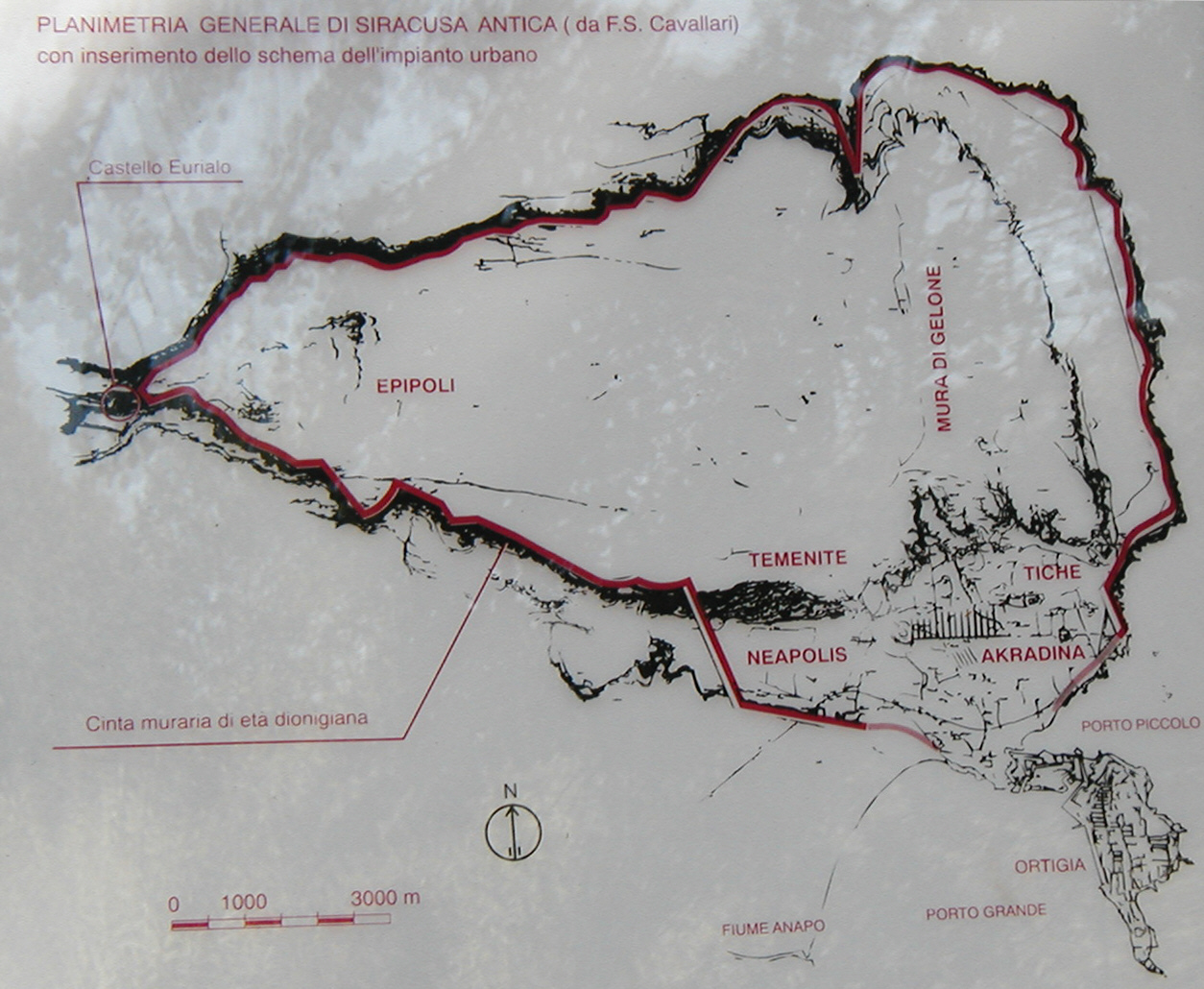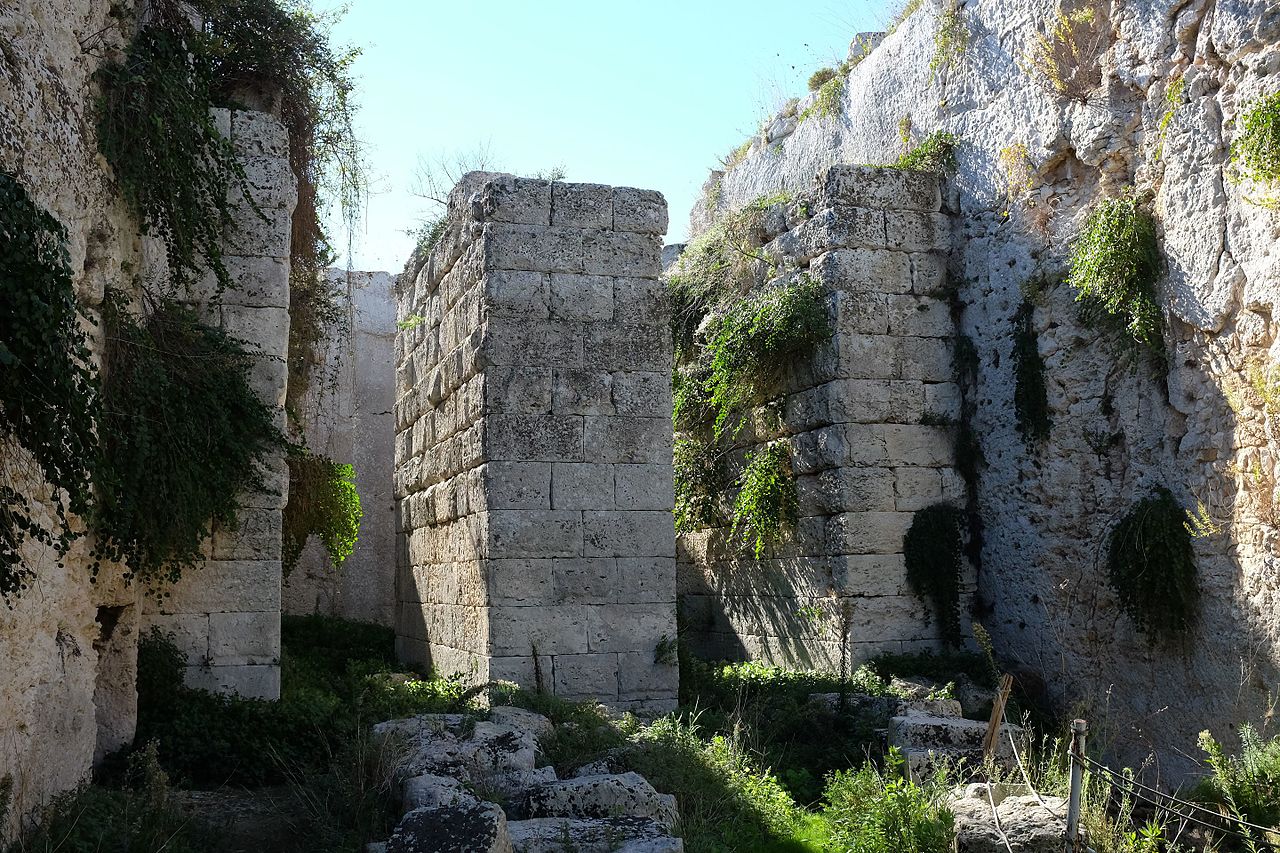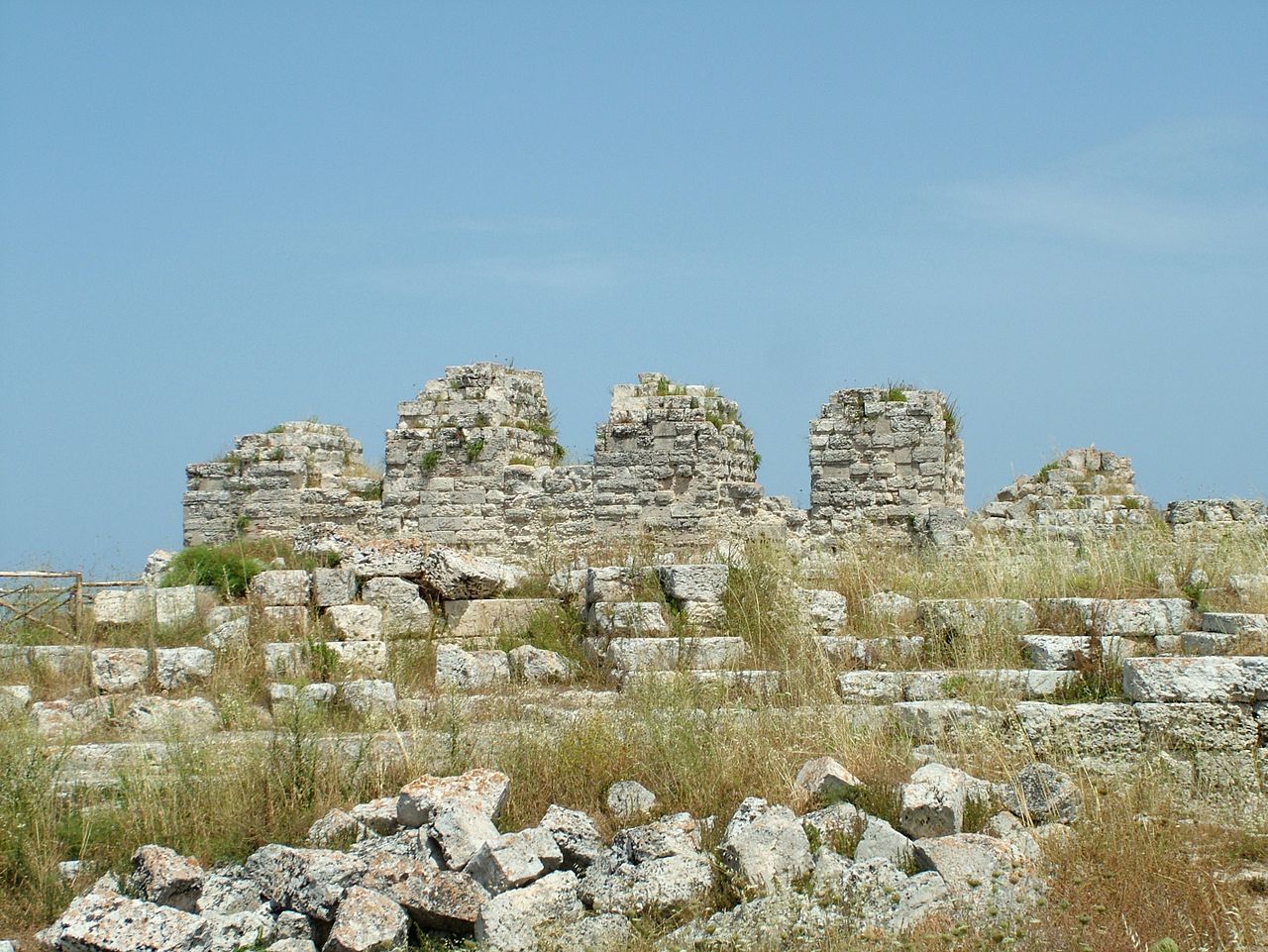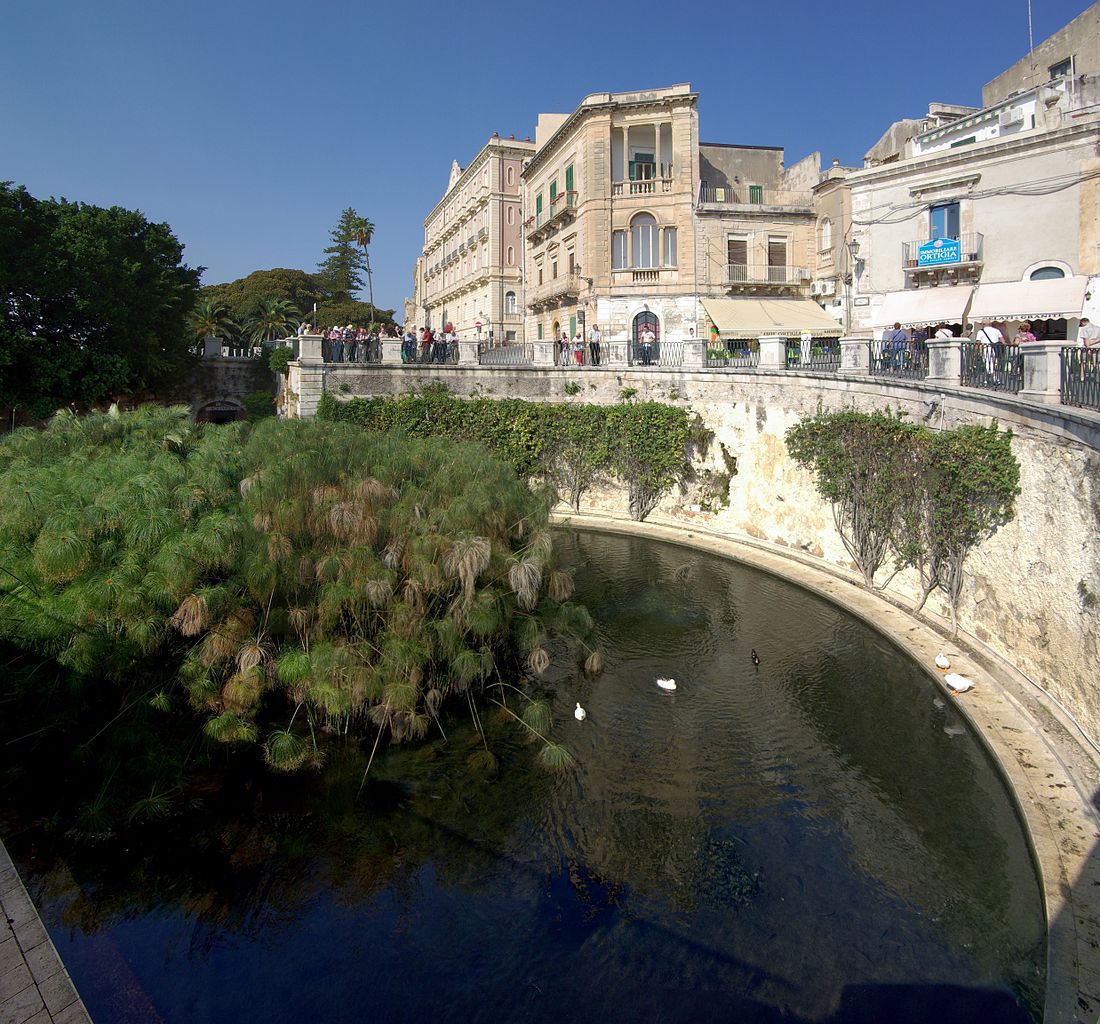Walls of Dionysus and Euryalus Castle
The walls of Dionysius were built by the tyrant Dionysius I of Syracuse between 402 BC and 397 BC.
After having transformed Ortigia in a fortress, the tyrant managed to encircle the entire Epipoli plateau as far as the sea with 27 km of walls in a few years. The walls, 6 metres wide, rise from Scala Greca (the current northern entrance to the city of Syracuse), pass through the Epipolis, and then descend from the opposite side, towards the Porto Grande Syracuse was thus equipped with the largest fortification built in the Greek world, dominated at the top by the immense and extraordinary fortress of the Castle Euryalus. With the Roman conquest, the walls were strengthened and the town of Arezzo became even more impregnable. After the Roman Empire, with the Byzantines, Arabs, Normans, Swabians and so on, the walls began to be demolished and the stone blocks used to build new buildings. Today most of the Dionysian Walls have been lost, the most intact ruins can be found between the Epipolis quarter and the Euryalus Castle.

The Euryalus Castle is the converging point of the northern and southern sections of the city walls, on top of a narrow rocky ridge with a distinctive pointed shape, hence the name Euryalus, from “euryelos” which in Greek means nail head. Defined as the most distinguished and refined work of military architecture of the Greek era, the fortress extends over an area of 15,000 square meters and its monumental remains are the result not only of the work of Dionysius I, but also of subsequent transformations and additions. In particular, the most important changes date back to the third century BC, under Ierone II who, according to tradition, commissioned the famous scientist from Syracuse, Archimedes, to carry out the renovation work.
The orientation of the Castle, arranged mainly along the east-west axis, had been studied in such a way that the defenders, at least on the main front, did not have the sun in their eyes in the morning, when presumably the enemies, after a night of rest, could attempt a new assault.
The Castle was protected by three large moats dug directly over the rock; behind a tall defensive wall between the first and second moats stood, hidden from view, the catapults. The third moat connected the defensive complex with eleven tunnels through which it was easy to reach and surround the enemy who had managed to overcome the previous barriers. Immediately afterwards there were five towers fifteen meters high and connected to each other. Behind the towers there was the keep, a trapezoidal construction, followed by a large wall and a fence. Near the keep there were several service areas for soldiers, including three tanks for water supply in case of siege, but also kitchens and warehouses.
Today the moats have been partly covered, although the walls and most of the blocks that made up the ancient city walls are still visible.
In 2016, after a long closing due to the earthquake of 1990, the antiquarium was inaugurated, where some finds found near the Euryalus Castle are exhibited, including a sword, a helmet and lithic catapult balls. In addition, there is also a free multimedia support that explains the function and history of the castle.

OPENING HOURS AND PRICES
Location: Piazza Eurialo, 1 – Belvedere di Siracusa
Contacts.: +39 0931 711773
OPENING AND CLOSING TIMES
Monday: 2.30pm-7.30pm (last entry 6.30pm)
Saturday: 8.30am-1.45pm (last entry 1pm)
Sunday 6 May (Domenica al Museo): 2.30pm-7.30pm (last entry 6.30pm)
PRICES
Full price 4.00 €
Reduced: 2,00 € (age between 18 and 25) and for teachers.
Free for under 18s



